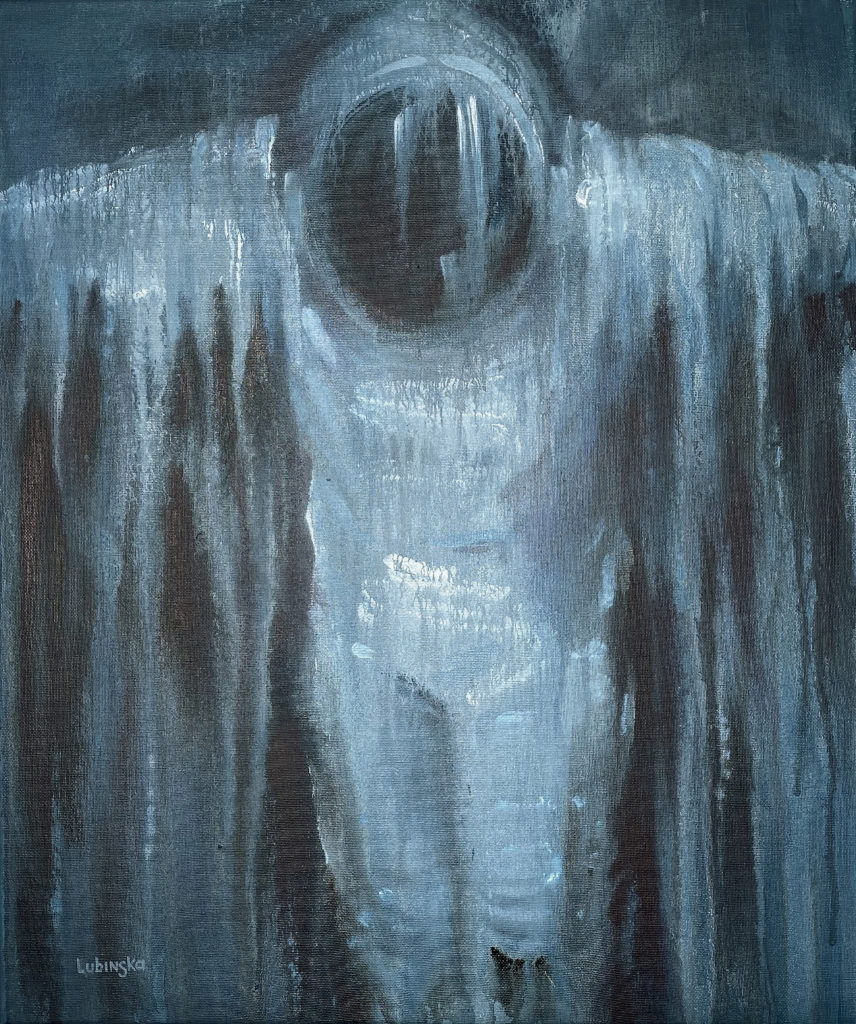
In Transfiguration, Victoria Lubinska-Felix reimagines the crucifixion not as an earthly event, but as a cosmic passage. The astronaut, arms outstretched in the unmistakable cruciform pose, appears to dissolve, his body cascading downward in luminous streams. What once was solid flesh becomes fluid matter, surrendering to the void — an image of sacrifice not bound to Earth, but diffused into the silence of the cosmos.
This is not merely a scene of loss. The melting body marks a threshold: the human form dissolving so that something beyond-human may emerge. In this moment, fragility and endurance fuse; death becomes metamorphosis; the martyr becomes more than human. The astronaut’s dissolution is both offering and ascension, a surrender that transforms him into continuity itself — into the possibility of intelligence carried beyond biology, beyond individuality, perhaps even beyond humanity.
Within IMMORTALIS CONTINUUM, Transfiguration stands as a pivotal work. It confronts the price of immortality: that to step into the continuum, something must be given up — flesh, certainty, the singularity of self. Yet in that sacrifice lies rebirth, not as one body, but as part of a larger unfolding — the continuum of survival, memory, and transformation in the face of infinite space.